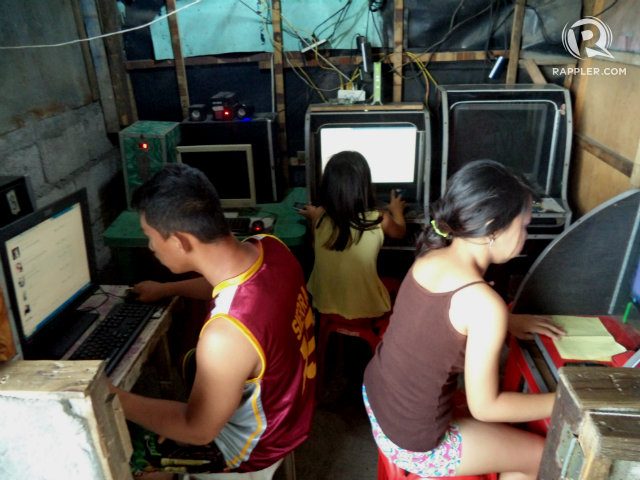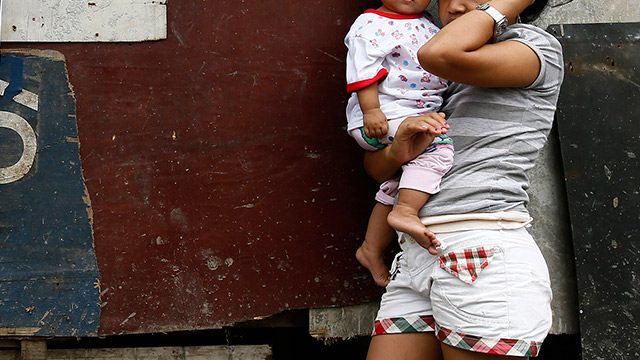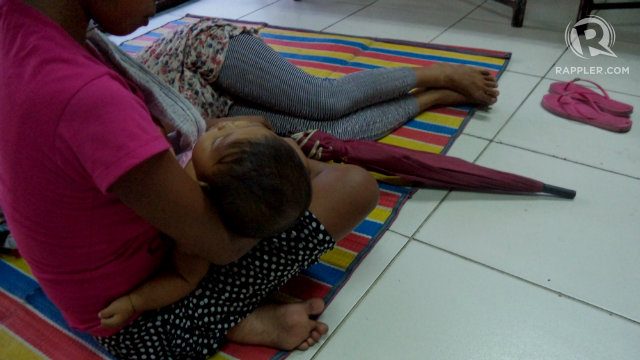SUMMARY
This is AI generated summarization, which may have errors. For context, always refer to the full article.

MANILA, Philippines – Generation Y, otherwise known as “millennials” are born in the 80s up to the early 2000s.
The mainstream image of millennials remains singular: college-educated, white-collar, urban. Their concerns include social media, travel, career-hopping, instant success, and dating.
The term, which originated in the US, has slipped into the Filipino tongue, but has disregarded the youth living in poverty.
Among these invisible millennials is M, one of the 28 million young Filipinos aged 15 to 30.
She was born and raised under a bridge in Manila in 1995. She earned her first peso in grade school, aiding her blind father beg across the streets. They earned P300 on good days.
|
Poverty incidence for PH youth |
||
| 2006 | 2009 | 2012 |
| 21.1% | 21.6% | 22.3% |
Money, brains
M did well in class, acing Filipino subjects. She is not fond of reading, but loves Ibong Adarna and Noli Me Tangere.
She graduated from high school at 15 and began a 12-week Information Technology vocational course at TESDA. She dropped out after 6 weeks. As of 2010, one of 8 Filipinos aged 6-24 is out of school, the Philippine Statistical Authority reported. At 14, she had her first syota (lover). “Hatid, sundo ako,” she recalled, “Tambay siya.” Love, however, did not spoil her studies.
Among urban settings, dropping out is mostly due to “cost of schooling,” the Philippine Institute for Development Studies found in 2012. Meanwhile, lack of transportation concerns those living in rural areas.
In fact, most of employed youth did not finish college, a trend in the past 4 years.
|
Number of employed PH youth (15-30 years old) |
|
| No education | 112,000 |
| Some/Completed Elementary | 2.8M |
| Some/Completed High School | 6.2M |
| Some/Completed College | 3.6M |
Majority were “laborers or unskilled workers,” followed by “service workers,” and “clerks.” Meanwhile, over 2.1 million were unemployed, the Department of Labor and Employment (DOLE) reported.
M’s house was demolished the same year she quit school; she helped rebuild it by waiting tables in a karinderya (eatery). The government relocated them to Laguna, but her family preferred the bridge because it’s near their source of income. (READ: Hungry, jobless at relocation sites)
Love, sex, asawa

M wanted to study, but her circumstances did not allow her.
According to her, at 16, she got hooked into chongke (marijuana), alcohol, and cigarettes.
She first had sex at 17, “bangenge kami nun.” (We were high.) It was P10 for 3 hits.
Her stepmother almost caught them. “Isang beses lang kami nag-ano. Natakot na ko mahuli.” (We only had sex once. I got scared of getting caught.)
No pills, no rubber. “’Di ako natakot mabuntis.” (I wasn’t scared of getting pregnant.) To avoid pregnancy, the girl stood after sex, “Para ‘yung ano ng lalaki ‘di pumasok agad sa puerta ko.” (So the man’s semen won’t quickly enter my vagina.)
Like M, many Filipinos were either clueless or did not use protection when they first had sex, the 2013 Young Adult Fertility and Sexuality Study (YAFSS) revealed.
|
Filipino youth (15-24 years old) who did not use protection during first premarital sex |
|
| College | 66.7% |
| High school | 79.6% |
| Elementary | 88.3% |
Her stepmother then forced her to end the 3-year relationship. The break-up happened two days before Christmas, she was devastated, but not for long. Five days into the new year, M rediscovered love while falling in line for bags of rice distributed by a non-governmental organization (NGO).
Her second lover was her neighbor, a childhood friend one year her junior. Their romance developed fast: She had sex for the second time, lived in with the boy, and called each other asawa (spouse) although unmarried.

Her folks liked her new partner. “Mabait (kind), nakatapos (finished) 1st year high school,” she said. Short on cash, they had to live with the boy’s parents.
About 14% of young Filipinos are “living in,” the 2013 YAFSS showed. Metro Manila topped the list with one in 5 young couples living together.
A year later, she got pregnant. She was not ready but her partner wanted a baby because he was jealous of his tropa (friends) with kids.
She dropped all vices except cigarettes, but takes pride in not smoking around her baby.
Whenever money’s tight, her parents provided their needs. Without them, M worries how her family will survive.
Her partner only earned P100 a day as a part-time construction worker – roughly enough for 3 mouths – before he lost job.
Dreams
M would soon turn 20; her baby, 6 months.
“Mahirap buhay namin (Our life is hard). No more babies, she said. How? No more sex. For how long? She doesn’t know, she said laughing.
She has never used contraceptives, “Delikado kasi sabi ni nanay,” (Mother said it’s dangerous) believing that condoms could get stuck inside her and that pills are expensive and harmful.
Since the baby came, the couple’s intimacy ceased, “‘Dun siya natutulog sa kanila. Ako, sa amin.” (He sleeps in their house; I sleep in ours.)
“Akbay-akbay na lang,” she quipped, “Kahit malayo mahal mo, okay lang.” (We just hug. It’s ok even if you’re far from the one you love.)
Sometimes she misses her dalaga (single) days: “Dancing Beyoncé” during fiesta, listening to rap, tambay (hanging out), and most of all, studying.
She wants to finish her IT course or become a teacher, whichever is more possible.
Her parents said she could study again when her baby’s older. Until then, she’ll juggle babysitting her child and her siblings, selling rugs, and doing household chores – duties she grew up doing.
Lately she has been joining workshops given by NGOs, and advising younger friends: Listen to your parents and study hard.

M often dreams of the future: She wants her baby to become a nurse.
“Para magamot lolo niya (To cure her grandfather),” she said.
Her other dreams include her asawa keeping a steady job; her brothers becoming welders and masons; and their house having no holes, so her baby would not fall into the canal.
“Muntik na noon, buti nagising ako,” she added. (The baby almost fell before; good I woke up.)
M said her baby is getting heavy at 8.3 kilograms. She thought about her upcoming birthday, her aging parents, her unsold rugs, her asawa, the laundry, and wonders how long her baby could remain chubby.
Like other millennials who share her plight, M sometimes worries: “Ano mangyayari sa amin (What will happen to us?). – Rappler.com
Add a comment
How does this make you feel?
There are no comments yet. Add your comment to start the conversation.